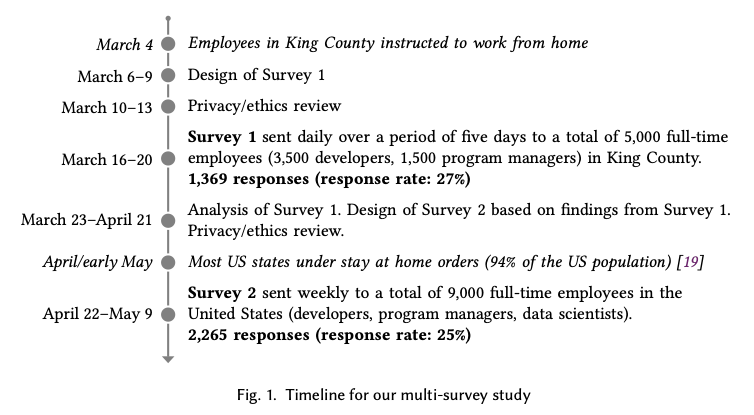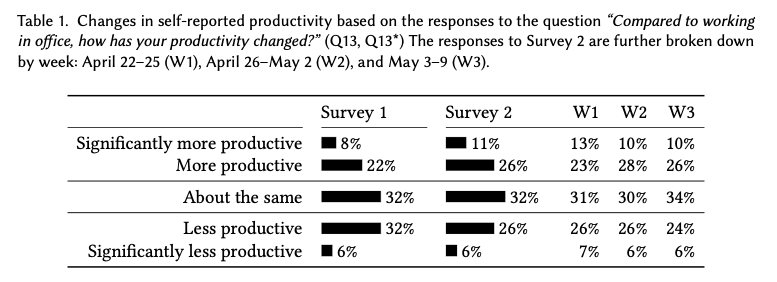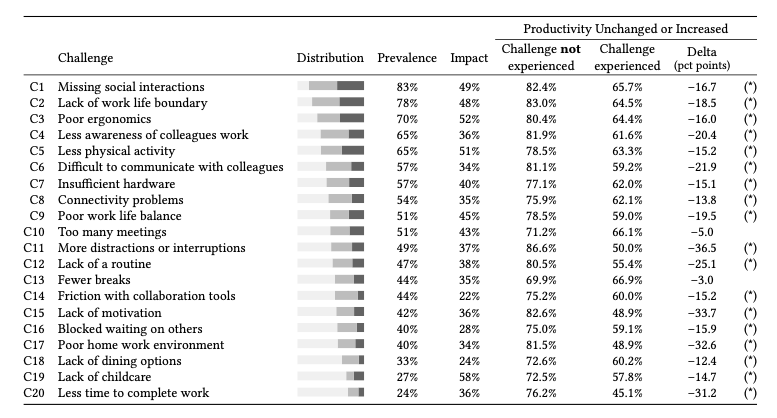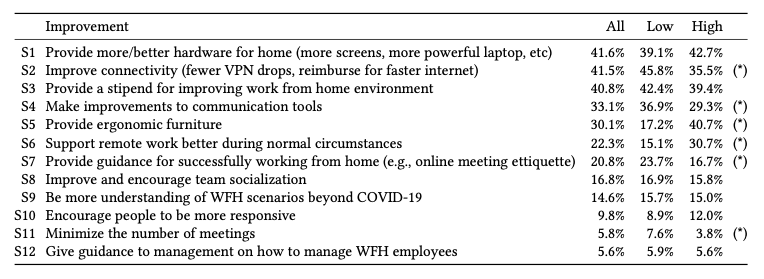Reading a Microsoft Research Paper
Preface
As remote work expanded during the COVID‑19 pandemic, large U.S. companies have begun collecting evidence—by comparing before and after—on whether productivity has actually increased.
Microsoft is one of the companies actively conducting such statistical analyses. You may already be familiar with perhaps their most famous study, "The Effects of Remote Work on Collaboration among Information Workers”, which was even covered by Japanese media.
However, that survey appears to cover Microsoft’s entire employee population—business roles and engineers alike. I couldn’t find an official figure for Microsoft’s engineer ratio, but based on a 2020 report of 47,000 developers and a total headcount of 163,000 worldwide, engineers would make up about 29%. I found that surprisingly low.
Microsoft Research has also published a developer‑focused remote‑work paper, "A Tale of Two Cities: Software Developers Working from Home During the COVID‑19 Pandemic”. I’ve just read that paper, so I’m jotting down some notes here.
TL;DR
- In the early phase, one‑third of people reported no change in their productivity whether they were in the office or remote; the rest were split between higher and lower productivity.
- 96% benefited from reduced commuting time (a round trip of 67 minutes).
- Longer focused work periods correlated with productivity gains.
- 83% felt a decrease in social interaction.
- Lack of motivation was a major factor in productivity drops.
- Measures such as stabilizing network connections led to observed productivity improvements.
- Pull requests per developer rose by 4.0% year‑over‑year.
Methodology

Data were collected from two surveys: Survey 1, limited to Microsoft employees in King County, Washington, and Survey 2, of employees across the entire U.S. Survey 1 ran from March 16–20, 2020; Survey 2 from April 22–May 9, 2020. In between, a government stay‑at‑home order was issued in April.
Changes in Productivity

One‑third of respondents reported no change in their work‑day productivity whether they were in the office or remote; the remainder split between saying it was better or worse. In the earliest phase, more people said it was worse, but over time the share reporting higher productivity edged up slightly.
Microsoft’s role categories differ somewhat from typical Japanese IT companies. I assume "people manager" corresponds to Engineering Manager (EM), "individual contributor" to Engineer, and "program manager" to Product Manager (PM).
By role, the share feeling more productive was about the same for Engineers (32%) and EMs (35%), but higher for PMs (40%).
I found that surprising, since in the all‑employee survey silo‑ing was listed as a key issue—I’d have expected roles with more interpersonal interaction (like PMs) to feel a bigger productivity drop.
Benefits of Remote Work

- 96% benefited from reduced commuting time (round trip 67 minutes; median 60 minutes)
- Lower expenses
- Greater scheduling flexibility
- Closer proximity to family
- Freedom of dress
For reference, in Tokyo many people commute over an hour one way—so a two‑hour round trip—meaning the gains there are even larger than in Washington.
Those who reported the biggest productivity gains also cited:
- Longer blocks of focused work time
- Fewer distractions
- Better home‑office environment
By role, EMs reported less improvement in work‑life balance or flexibility than Engineers did. Conversely, PMs felt closer to family and saved more on commuting costs compared to Engineers. I suspect these differences partly reflect correlations among role, age, and family situation.
Challenges Faced

The top‑voted negative impacts were:
- 83% felt reduced social interaction
- Blurred lines between private life and work
- Loss of ergonomic equipment (e.g., standing desks)
- Uncertainty about what colleagues are working on
- Lack of exercise
When asked which factors most drove productivity declines, respondents cited:
- Distractions
- Lack of motivation
- Insufficient colleague communication
By role, compared to Engineers EMs reported more meetings and fewer breaks; parents juggling childcare also noted that feeding children during breaks was an issue. Compared to PMs, Engineers felt more hindered by slow network connections, limited meal options, and lack of routine—perhaps reflecting how much they relied on free office lunches.
Productivity‑Boosting Measures

Microsoft implemented several initiatives to support remote productivity. The most highly rated measures were:
- Allowing employees to take monitors and other equipment home
- Providing stipends for network costs and stabilizing VPNs
- Subsidies to improve the home office setup
Home‑office subsidies showed little difference in perceived effect between those who did or didn’t feel boosted by remote work. Those who felt less productive favored network stabilization and improvements to collaboration tools (e.g., digital whiteboards), while those already feeling productive benefited more from ergonomic equipment and ongoing remote‑work support.
Other Observations
- EMs and PMs experienced an increase in meetings
- Parents concerned about childcare reported lower productivity
- Pull requests per developer grew by 4.0% year over year
- At the company level, overall productivity was flat or slightly up, but individual experiences varied widely
